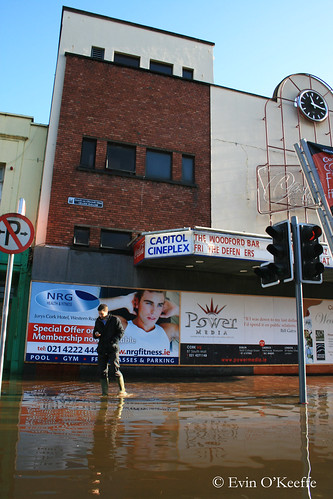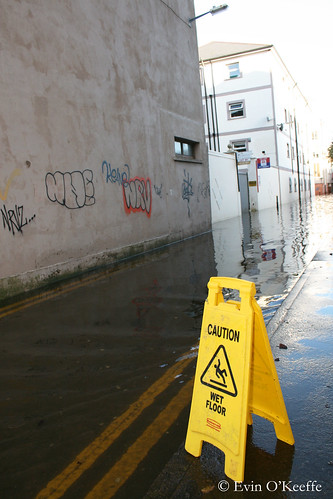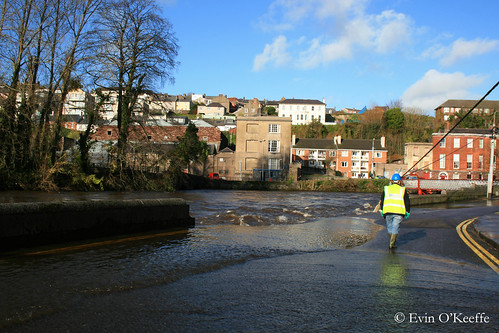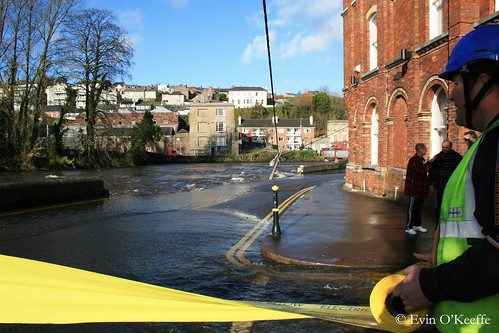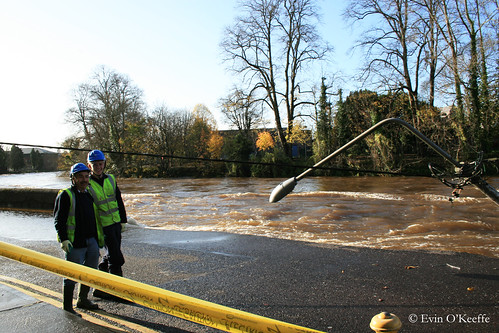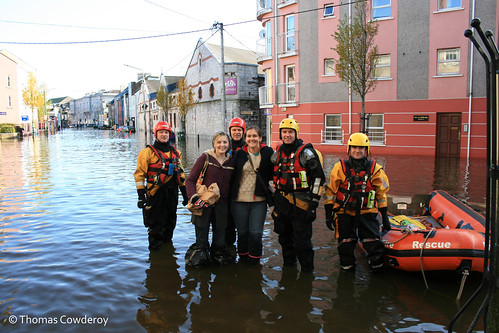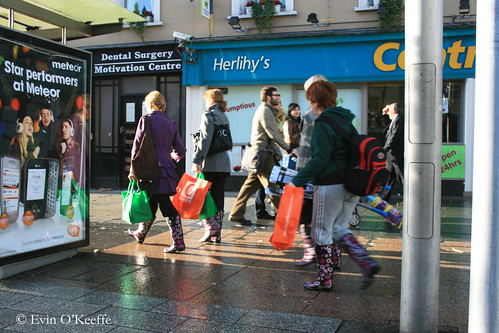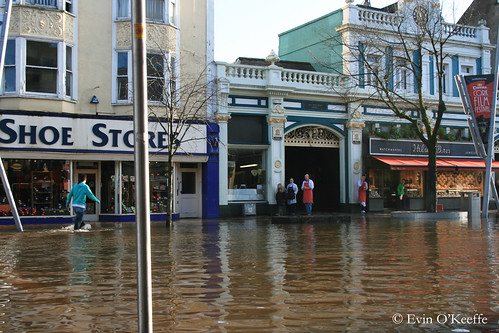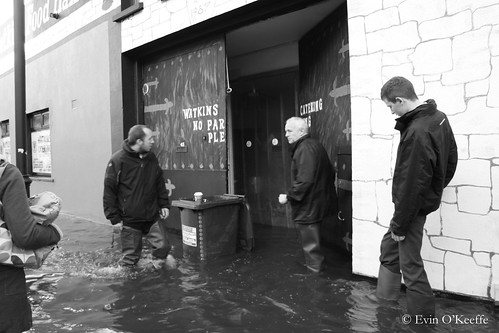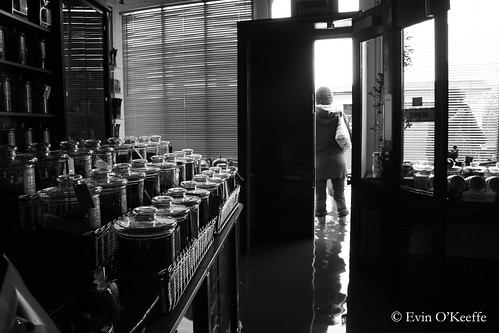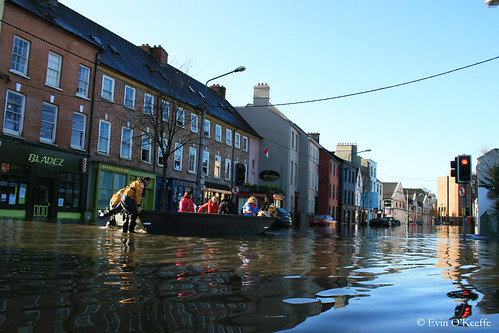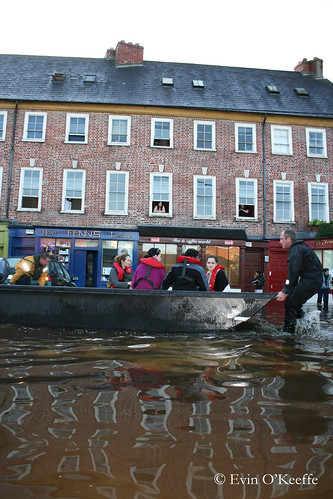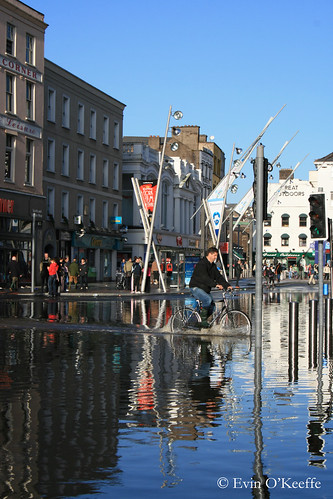Last night, the city I live in flooded…again (photos). This has happened a few times recently but also in November 2009. In four years since that horrible devastating flood, very little has changed in the city’s flood prevention infrastructure but the citizens, including myself, have learned some lessons.
But before I teach you what I’ve learned, I’m going to give you links to reliable expert sources that back up what I’m saying so you know I’m serious:
The AA Flood Water Advice
Cleaning Up After A Flood
Dangers of Contamination in Flood Water
Waterborne Illnesses and Flood-related Ailments
Natural Disasters & Environmental Hazards
Lesson 1: The sidewalk and the road are at different levels even when the water makes it seem all the same. This means you need to be careful where you step when walking in the water or you may slip, trip or stumble.
Lesson 2: Just because it only looks like a puddle doesn’t mean it’s not deep. “If you fall over in 6 inches of water moving at only 6mph you are unlikely to be able to stand up again” (AA) The first photo shown is of a lane that appeared shallow but within a few steps, the water was a meter deep!
Lesson 3: The sidewalk and road may look the same as the river and when that happens, be as careful on the pavement as you would in the river. Both have currents! “Moving flood water in particular is powerful, relentless and extremely dangerous” (AA)
Lesson 4: Never underestimate the dedication of our public works engineers. Those high-visibility vests mean they are doing something risky. The gentlemen below are guarding a power wire that was pulled down by a lamppost that was pulled into the river when the quay wall crumbled. Appreciate your professional rescuers. They are on the front lines making sure doctors get to hospitals, puppies get to safety and high risk issues don’t cause injury.”Travelers should exercise caution during clean-up, particularly when encountering downed power lines, water-affected electrical outlets, interrupted gas lines, and stray or frightened animals. During natural disasters, technological malfunctions may release hazardous materials (such as release of toxic chemicals from a point source displaced by strong winds, seismic motion, or rapidly moving water).” (CDC)
Lesson 5: Don’t try to be fashionable, just be safe and dry.
Lesson 6: Once local businesses reopen, be there to support them. I went out the day of the flood back in November 2009 to photograph any shops where owners needed to file insurance claims. It had to be done before the water flowed back to the river to document the flood level, but many shops lost their cameras and electronics to the flood. Of course, since then flood insurance is almost impossible to attain here. So the best support is by going there for your purchases or meals.
Lesson 7: Just because it is water doesn’t mean it is clean. If you wouldn’t swim in the River Lee, why would you swim in the streets when they flood? Yes, people swim in flood water for a laugh. Like these people:
http://www.youtube.com/watch?v=VOLrMSI7ioA
http://www.youtube.com/watch?v=pSOuEMMw5Vc
http://www.youtube.com/watch?v=z6pjpO8QkwI
“Floodwater contains micro-organisms – bacteria, viruses and parasites – that can make you ill. High water can increase the risk of sewer backups and basement flooding. Sewage contains micro-organisms that can make you sick.” (Floodwater and Your Health)
Lesson 8: If you are able to, invest in sand bags, a flood barrier or guard for your vulnerable doors. Especially if you are not able to get flood insurance.
Lesson 9: Try to avoid parking in a flood zone, unless you secretly want to replace your car.
Lesson 10:
Hospitals still need to remain open so try to help your friendly neighbourhood doctors, nurses and medical staff get to work. This is when boats are most useful. If you have the means to help your neighbours, friends or colleagues, do it.
Lesson 11: Driving in flood waters creates a current and wave that can fuse further damage by pushing water into businesses, homes and narrow lanes where it can flood an area that has just been cleaned or cause someone to fall. Sometimes bicycle is the best way to get around. But be sure to oil the gears well afterward. “Vehicles can quickly become unstable in moving water – 12 inches of water moving at only 6mph is enough to float the average family saloon.” (AA)
Lesson 12: If you do not need to, do NOT come in contact with flood waters! I know, this kinda repeats Lesson 7 but obviously it needs to be said twice. Exactly 12 days after I took these photos, I came down with the Mumps because my skin came in contact with the flood water than I went home and took a shower to wash it off but I still got sick. “Floodwater can carry bacteria, waste and contaminants that cause disease. People may be impacted by diarrheal illnesses, hepatitis A and parasites. There is also a small risk during widespread flooding for a bacterial disease called leptospirosis, which is caused by exposure to animal urine.” (Dangers of Contamination in Flood Water)

And if these photos haven’t convinced you, just look at this photo.

